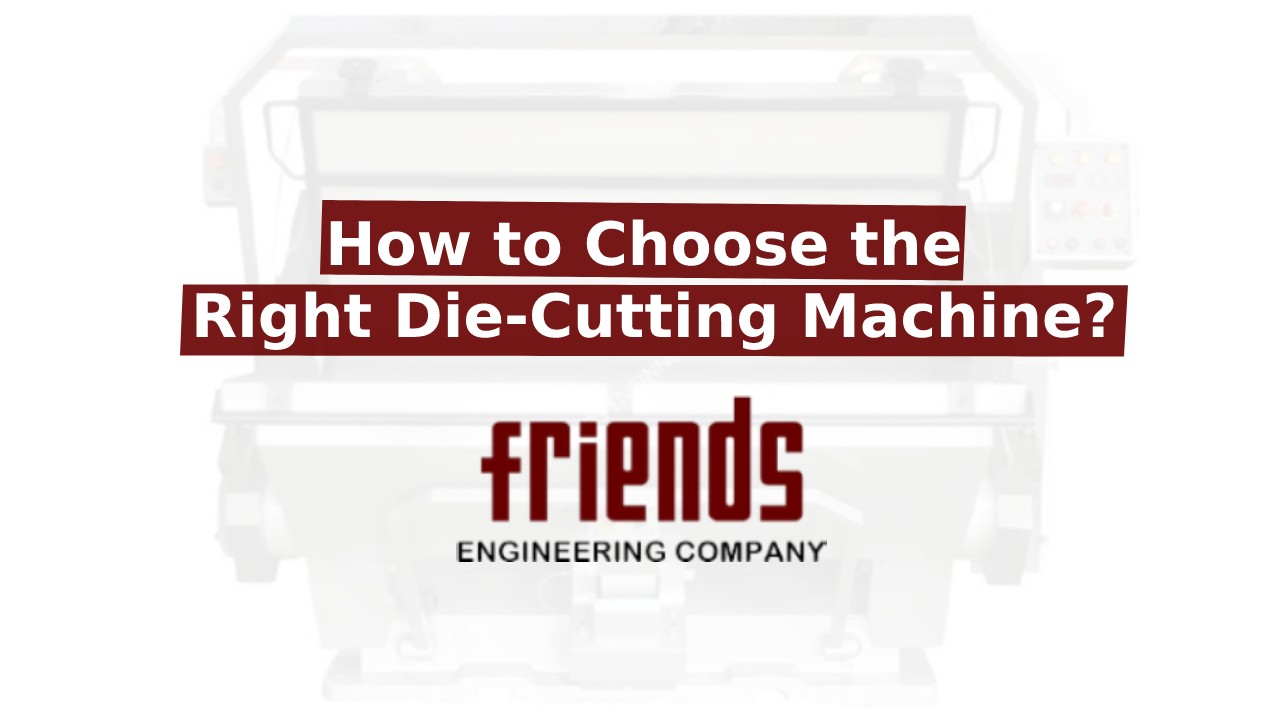Your budget, the type of material you'll be cutting, how frequently you'll use the machine, and other criteria will all play a role in determining which commercial die-cutter machine is best for you. The die cutting machine you should buy can be determined by the answers to the questions below.
What other types of die-cutting machines are there?
Your first move should be to learn what kinds of die-cutting machines are offered. The most widely used engines are listed below in brief:
Rotary:- A rotating cylindrical anvil is the main component of a rotary die-cutting machine. The die quickly and precisely performs a sequence of cuts to form the desired shape or piece after being fed with a non-metallic material.
Press:- This is a flexible choice for various purposes. The machine can be powered by manual, digital, or both sources. It is utilised with a variety of materials, including composites, polymers, and metals.
Flatbed:- Here, cuts are made with a steel rule die using hydraulic pressures. Die-cutting machines that automatically move across a flatbed are perfect for butt and kiss cuts on sheets of laminated material.
Laser:- A focused, non-thermal beam is employed by laser die-cutting equipment to cut the material. Due to the fact that it doesn't produce heat that could harm the material, it is perfect for shaping and slicing non-metallic elastomers.
Water Jet:- Instead of using physical dies to make cuts, this kind of equipment employs a stream of water that is under extreme pressure. It is perfect for cutting a variety of materials, including composites and metals.
What are your plans for the die-cutting machine?
Each and every commercial die-cutting machine has a different cutting operation capability. Here are a few examples:
Through cutting:- Because the die-cut penetrates the face, adhesive, and backing layers, materials with adhesive backing are ideally suited for cutting, also known as metal-to-metal die-cutting.
Kiss cutting:- Kiss cutting halts the cut before it pierces the layer of backing material. From the undamaged backing layer, the die-cut design can be removed with ease. It works well for stickers, labels, and decals.
Perforating:- There are perforated holes that span the stock material, holding the perforating cut design in place. It is perfect for tickets, coupons, and paperwork since the perforated lines allow for simple separation.
Scoring:- The scoring cut design creates an indentation or partial cut rather than a full cut. Making fold lines on folding cartons, greeting cards, and business cards is easy to do with this method.
Creasing:- Creasing, as opposed to scoring, results in the formation of an inward bending bulge between two parallel stress sites, which increases the material's flexibility. For heavier materials like cardboard that might tear if completely cut, this is great.
What qualities should the perfect die-cutting machine have?
Automatic die-cutting machines share a number of qualities, but the best machine for you will depend on your unique requirements. Here are some characteristics to consider:
Size:- The size of the materials you wish to cut and the amount of space available will define the size of the die-cutter. Make sure the die-cutter can handle huge materials if you intend to cut them.
Strength:- The strength is the amount of pressure the material can withstand from the die-cutter. Increasing the pressure allows the machine to cut through steel and other rigid materials.
Durability:- You want to make sure a die-cutter will last because it is an expensive investment. Choose a device with a robust warranty that is constructed with premium components.
Ease of use:- The die-cutter should not pose too much of a challenge for you to set up and use. Find a device with simple-to-follow directions and an intuitive user interface.
Cost:- You should shop around for the greatest price, just as with any other purchase. But remember that sometimes the lowest option isn't the greatest deal. To ensure you're getting a good value, consider the die-features cutters and functionality.
It can be difficult to select an automatic die-cutting machine that works for you. The same process has been done in paper cutting machines. However, you can reduce your selections and find the ideal machine for your needs if you know what characteristics are crucial to your business and what kinds of materials you'll be cutting.
Our equipment may be tailored to your particular requirements and is suited for enterprises of all sizes. To find out more about our goods and services, get in touch with us immediately.




